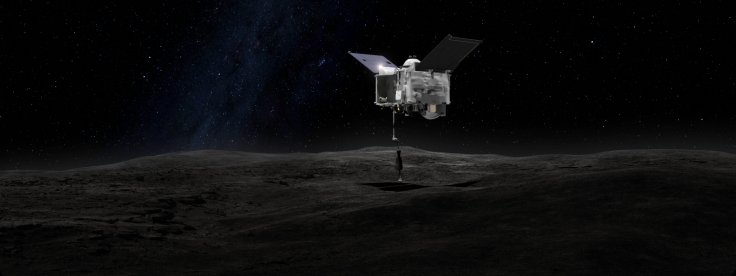
Asteroid Bennu's secrets may soon be unlocked by NASA because the space agency's Origins, Spectral Interpretation, Resource Identification, Security-Regolith Explorer (OSIRIS-REx) spacecraft is set to bring samples of it back to Earth for further study.
After arriving at asteroid 101955 Bennu on Dec. 3 last year, NASA's OSIRIS-REx is still on an ongoing mission to orbit and observe the carbon-rich rock. At the moment, OSIRIS-REx is conducting an in-depth study of Bennu and helping scientists gain insight into the formation of space rocks. However, in 2023, the spacecraft's sample return capsule will be making its way to Earth to bring back a piece of the asteroid, according to Phys.org.
If it succeeds, this will be the first U.S.-led asteroid sample-return mission. Prior to NASA's OSIRIS-REx, the first spacecraft to bring back samples from an asteroid was Japan's Hayabusa back in 2010. Its successor, Hayabusa2, is currently on asteroid Ryugu, which is also known as 1999 JU3, and is set to depart with more samples in December, the BBC reported.
With the help of samples provided by NASA's OSIRIS-REx, scientists will be able to learn more about the formation of asteroids, which in turn would help in understanding its composition and unlocking clues about the early solar system.
"Osiris was formed from pieces scattered across ancient Egypt, where he awoke as the bringer of life and ruler of the underworld," Dante Lauretta, the principal investigator for OSIRIS-REx, said in a statement released on NASA's website. "Our spacecraft has a similar story — it will be consist of components fabricated in locations around the world, that once together, will allow us to connect with a near-Earth object that is an accessible remnant from the formation of our solar system."
The data the spacecraft gathers could also be useful in predicting the orbit of asteroids that are in a possible collision course with Earth and help in the efforts to prevent asteroid impacts, as well as possibly mining the space rocks.
"The knowledge from the mission will help us to develop methods to better track the orbits of asteroids," Jim Green, director of NASA's Planetary Science Division, said in the statement.
NASA's OSIRIS-REx is currently helping scientists learn more about the Yarkovsky effect on asteroids. This effect happens when heat from the sun alters the movement of an asteroid or another object. While the push sunlight provides is tiny, it could build up over time and eventually change the path an asteroid travels. It has, however, been difficult for scientists to study the Yarkovsky effect because it differs based on the shape of the space rock.
This isn't the first time NASA launched missions to observe asteroids. The agency's Dawn spacecraft was launched in 2007 and arrived at asteroid Vesta, the second-largest object in the asteroid belt between Mars and Jupiter, in 2011. It became the first spacecraft to orbit an asteroid in the main belt.
The Dawn orbited Vesta for nearly a year, before heading to the dwarf planet Ceres about 3.1 billion miles (4.9 billion kilometers) away, according to Space.com.
This article was first published in IBTimes US. Permission required for reproduction.









